Architect: Bruce Gilliland
Walkable: Yes
Highlighted holes: 2, 3, 4, 5, 6, 7, 8, 16, 17, 18
Every time I’d driven by Four Winds on my way back to Colorado, I’d look over, say, “that looks nice. I should stop there,” and keep going. Last year I finally committed and made the trip up on a day off. As I had no idea what to expect, the course, especially the front nine, was a delight to discover. It was such a surprise that I’m tempted to put a spoiler warning on this review, but if you were looking and found this post on this site, you might as well keep going.
The course is just off the interstate and the first thing you’ll notice is the abundance of pine trees (the course’s website boasts more than 5,000). Most, if not all of the holes are lined with them and were it not for the occasional vista look at the prairie, you’d be excused for thinking you weren’t in Nebraska. In a state with the largest man-made forest in America – it’s not surprising that they went in this direction.

The course is a par 72 with one par five on the front, and three on the back. Position is everything out here as some of the holes that look gettable actually reward those who lay up into the right position. The front nine was built in 1970 by Bruce Gilliland, who added the second nine in 1993. Four Winds is Gilliland’s only design and he served as Kimball’s Director of Golf from 1966 until the mid-2010s.
The round starts inconspicuously by easing you in with a long, straightforward dogleg par four but after that, the real fun begins. Holes 2 through 8 are a brilliant stretch of delight.
Two: Even if you’re not playing the course from the tips, I recommend making the trek back up to the top of Coyote Hill and taking in your surroundings. The green is surrounded by mature pine trees that function like a medieval castle with walls, parapets, and imposing gates.

Unlike the other tees, this box demands an accurate shot from an angle to a narrow fairway. Laying up so that your approach is in line with the chute that is the only direct line of sight into the green is the play. Anything in the fairway near the 150 yard stake stump is good. Left or right of the green will require a high shot that drops out of the sky onto a blind green. Try to hit your tee shot to within wedge distance and chances are you’ll be too close to get the ball up over with no other option than to pitch out.
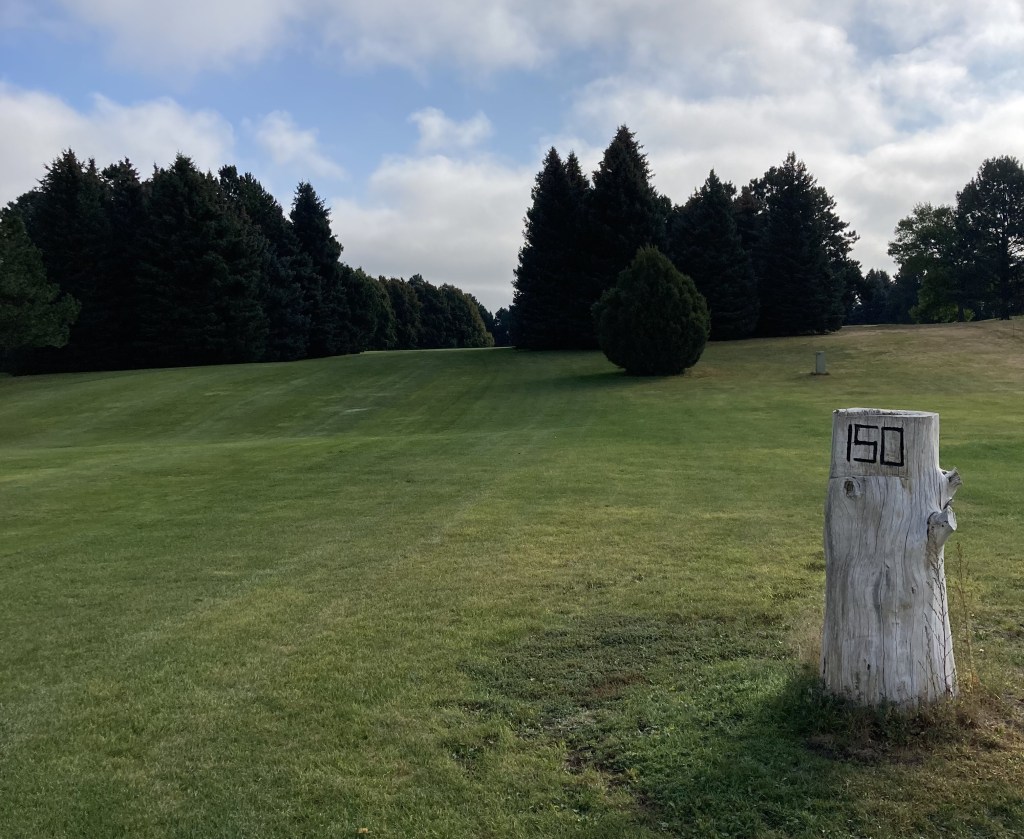
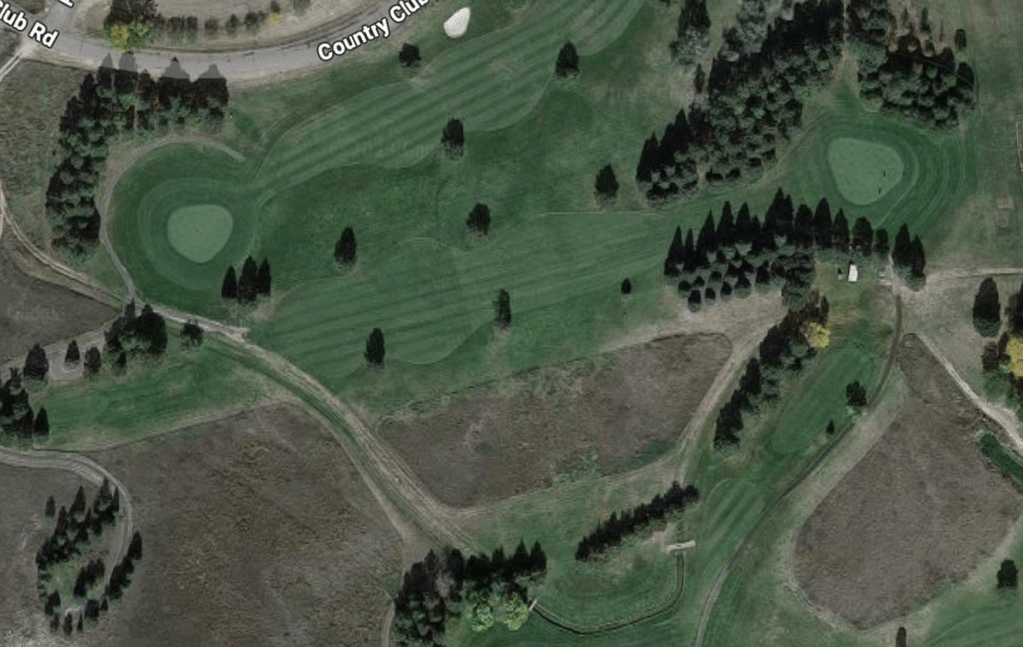
Three: The third is a par three with what can only be described as a burn that loops out and back in front of the green, giving you two convenient spots to find the water. Miss short, but over the creek, and a crueler superintendent would let you roll back into the water. A tall backstop sits directly behind the green making it better to take one more club than find yourself scrambling for bogey.

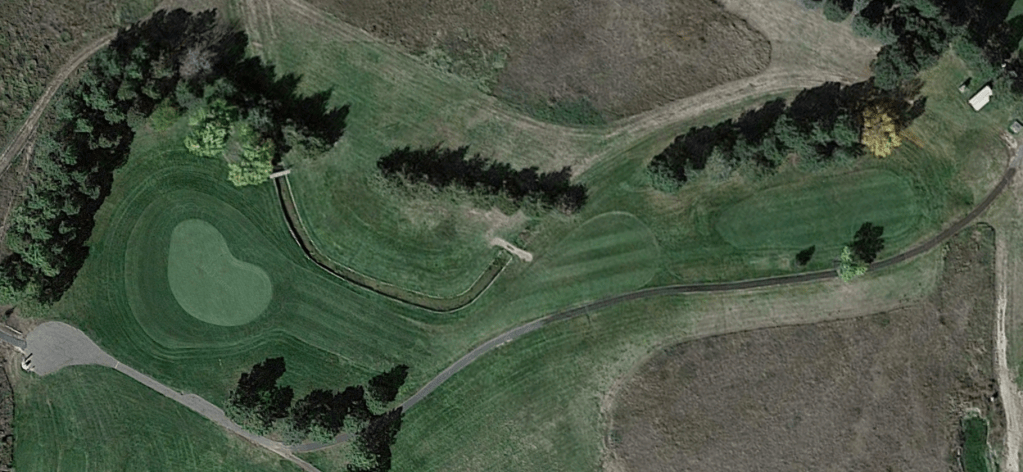
Four: An old sign at the tee indicates that this hole is named “Chicken House.” I saw neither chickens, nor houses and therefore have no further explanation. While it may look like you can hit a driver out to the corner of this dogleg, beyond the crest of the hill, the fairway drops and a well hit shot will either run through into the rough or kick left into a creek which is fed by an ugly and unnecessary waterfall. Ignore this. From here you should have a downhill mid-iron into the green.
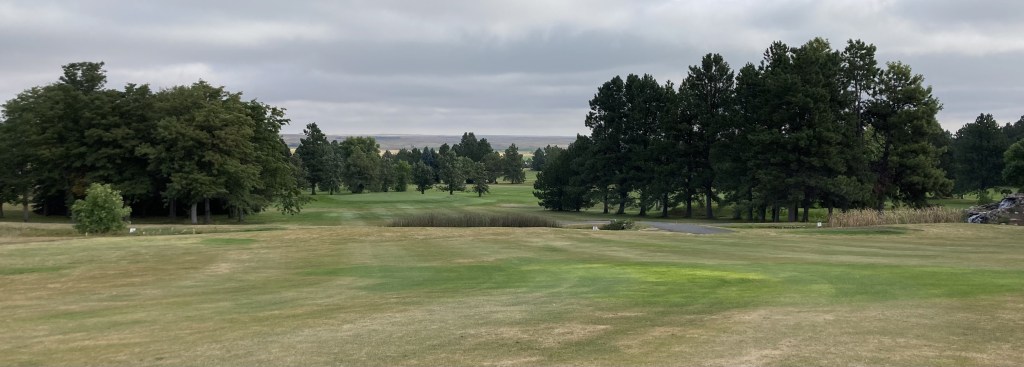

Five: Five is a short, straight, uphill par four. Good hole. Self-explanatory.
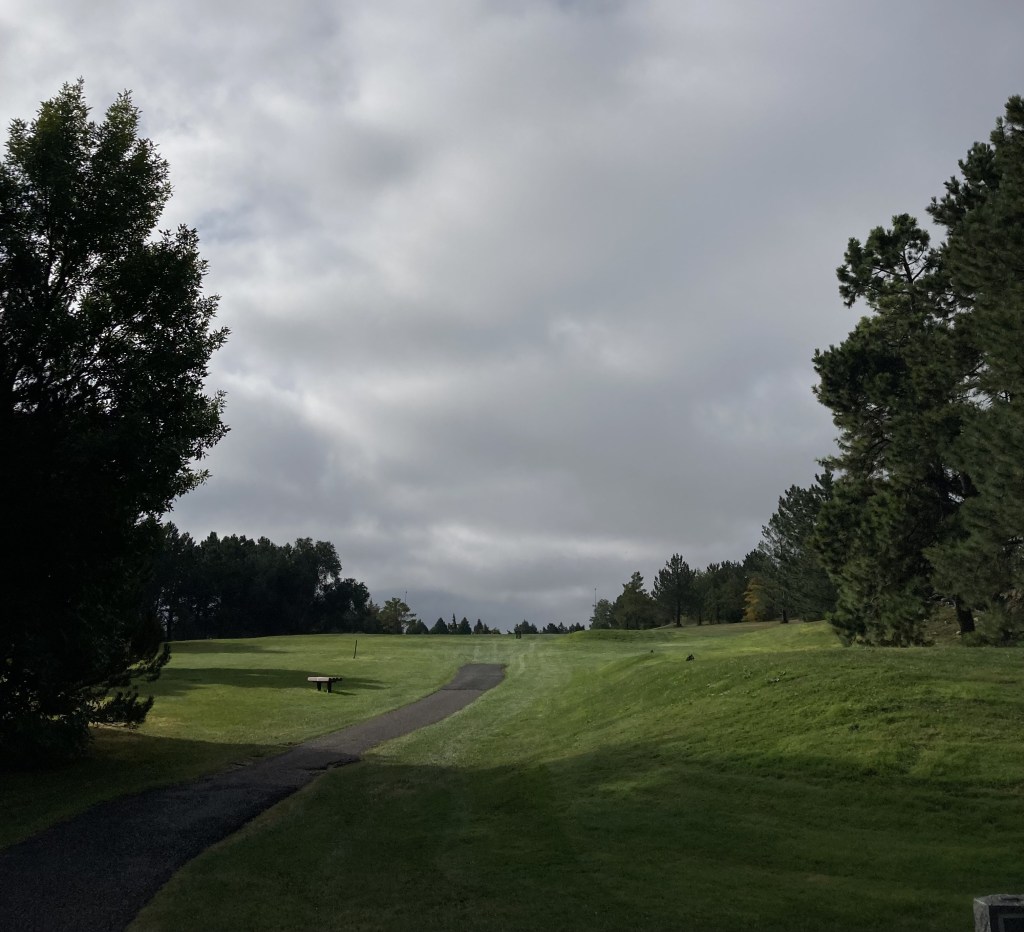
Six: Now that five has gotten you up the hill, six takes you immediately back down. This 190 yard par three plays closer to 160 with both an abrupt drop and a mowed down apron that will propel anything hit short forward. You can’t see the green from the back tees so taking a mental picture and committing before heading back there is advised. There’s something about a big drop on a par three that makes me happy.


Seven: The seventh is a downhill par four with a blind tee shot, so make note of the group in front of you and maybe give them an extra minute before you wail away. The fairway is wide, but anything off of it will be in the trees. Part of the fairway edge slopes down to the left putting you into even further trouble. The hole is downhill and cants left. Start your drive down the right side and you’ll have a wedge in.
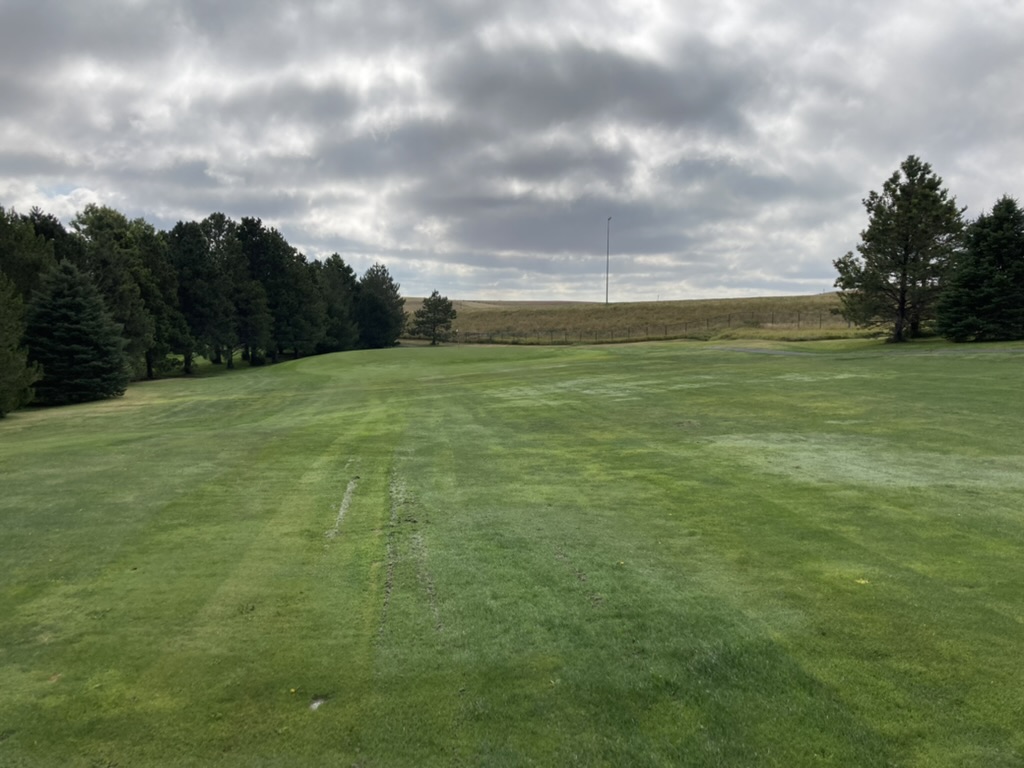
Eight: From above, the eighth even looks like a smile with tee box and green dimples. The drive is narrow out of a chute to a skinny fairway. While you can miss right, you’ll want to keep it to the center of the fairway to take a shot at the green. A large hill is on your left and the ideal line is to skirt it along the corner to get to the green in two. This is the most interesting green on the course with a sizable hump in the middle that creates two tiers.


Back nine: The back nine, from ten to sixteen is largely flat. Ten is a good par four that doglegs around a pond surrounded with trees. Thirteen is a short par four with a pond in front of the green that looks like someone reversed a shrink ray on someone’s backyard pool. The back tees on the fourteenth put you out along a dirt road into someone’s pasture. Fifteen is a dogleg right that rewards a draw if you’re unwilling to lay up.
Sixteen: Sixteen brings us back to the great topography of the front. The tee shot is straight uphill to the corner of this par five dogleg that immediately turns downhill from the apex. The right woods are more in play than they look. If you can make it up to the top of the hill, swing away for one of the most wide open greens out there.
Seventeen: This part three wouldn’t look out of place at a Castle Pines muni. The green is nestled in among pine trees and drops off steeply to the left.
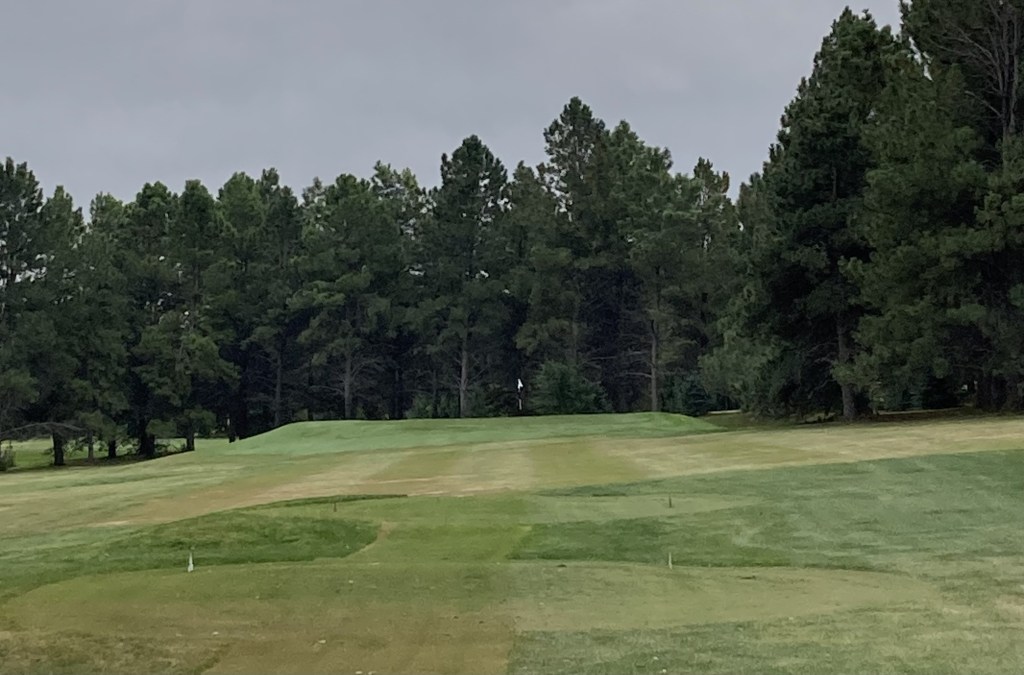

Eighteen: The last is a strong 460 yard par four that plays uphill to a green that is guarded on the left by a tangle of trees and bushes. While your best angle in will be from the right side of the fairway, be careful off the tee as the rough falls off right and you could find yourself in a maintenance building.


Final thoughts: As I played the front nine, the fun and inventiveness kept revealing itself and I couldn’t stop grinning. The course is only a couple of hours from the Denver area and less than an hour from Cheyenne. I would recommend stopping by and playing at least the front nine on a trip back from golf in the Sandhills.
Resources:
Western Nebraska Observer – Bruce Gilliland to be inducted into Nebraska Golf Hall of Fame
Nebraska Golf Association – Four Winds Golf Course
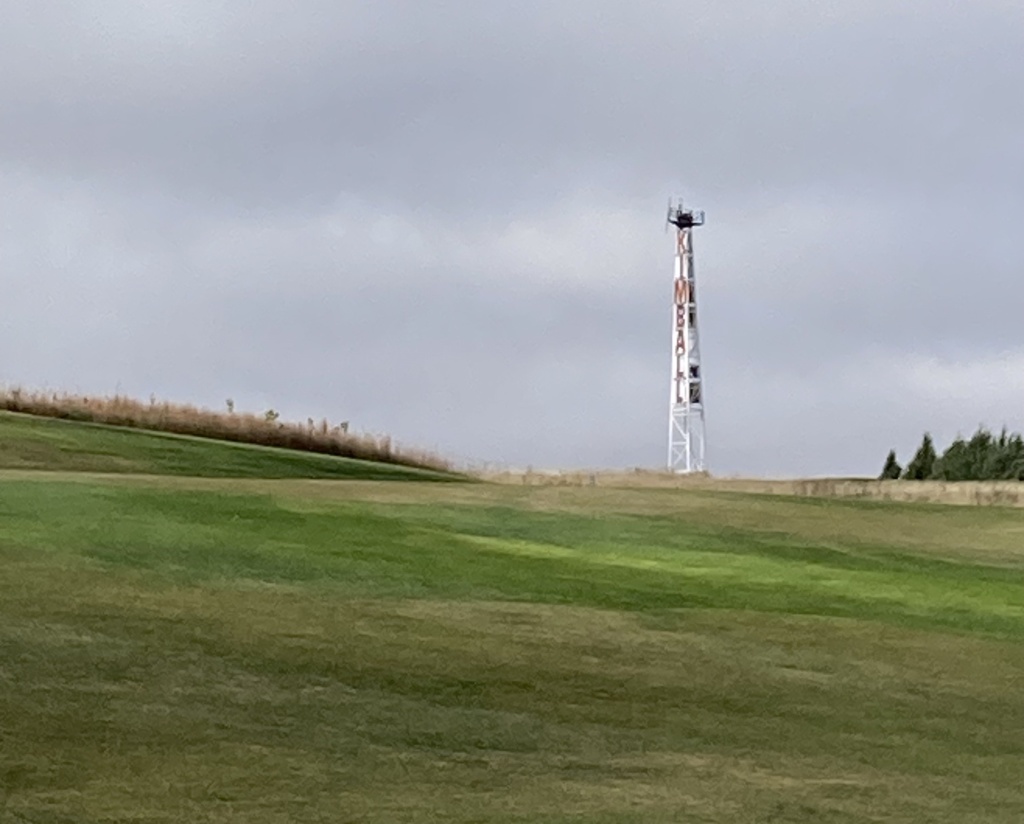
Leave a comment